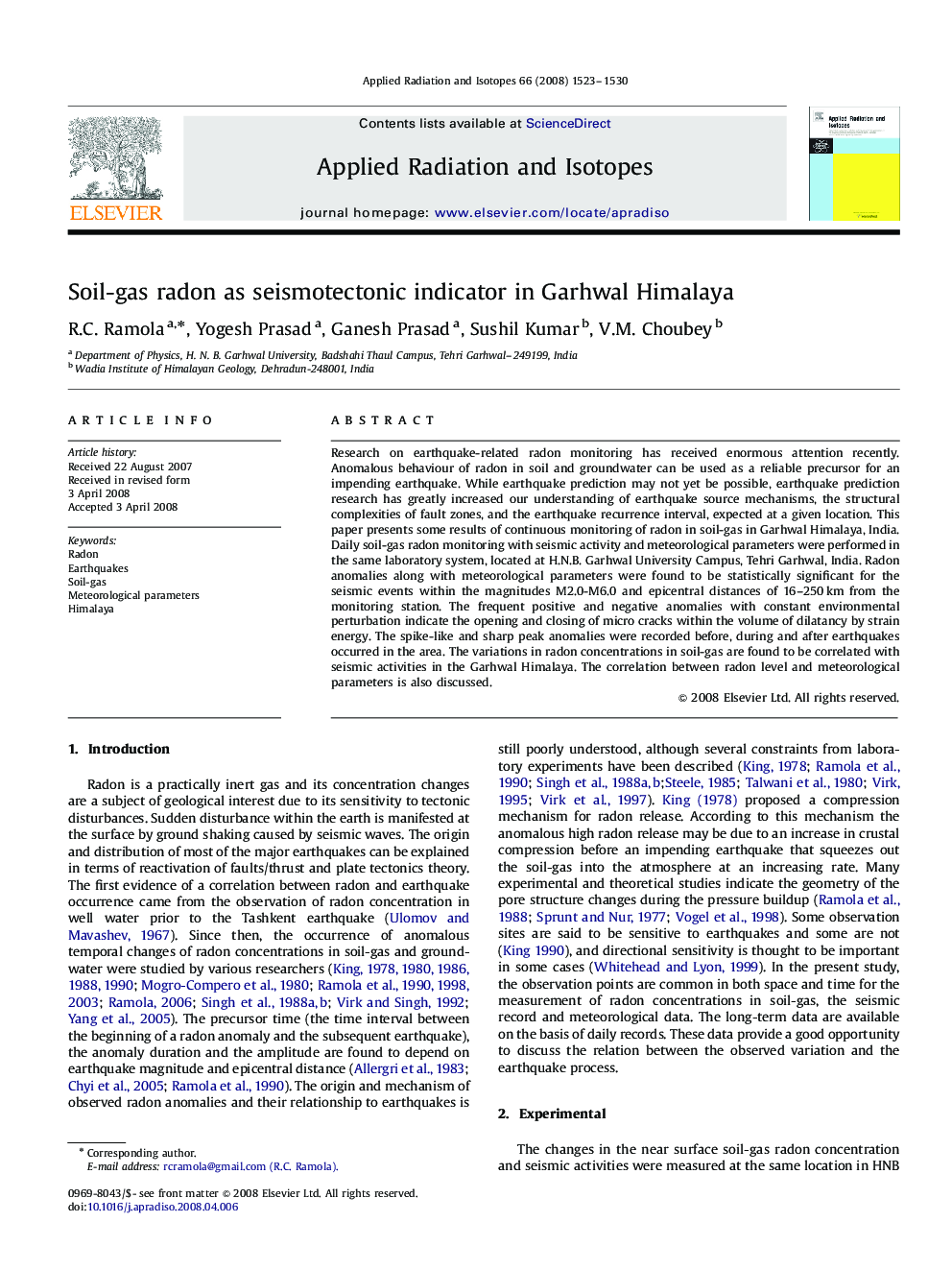| Article ID | Journal | Published Year | Pages | File Type |
|---|---|---|---|---|
| 1877012 | Applied Radiation and Isotopes | 2008 | 8 Pages |
Research on earthquake-related radon monitoring has received enormous attention recently. Anomalous behaviour of radon in soil and groundwater can be used as a reliable precursor for an impending earthquake. While earthquake prediction may not yet be possible, earthquake prediction research has greatly increased our understanding of earthquake source mechanisms, the structural complexities of fault zones, and the earthquake recurrence interval, expected at a given location. This paper presents some results of continuous monitoring of radon in soil-gas in Garhwal Himalaya, India. Daily soil-gas radon monitoring with seismic activity and meteorological parameters were performed in the same laboratory system, located at H.N.B. Garhwal University Campus, Tehri Garhwal, India. Radon anomalies along with meteorological parameters were found to be statistically significant for the seismic events within the magnitudes M2.0-M6.0 and epicentral distances of 16–250 km from the monitoring station. The frequent positive and negative anomalies with constant environmental perturbation indicate the opening and closing of micro cracks within the volume of dilatancy by strain energy. The spike-like and sharp peak anomalies were recorded before, during and after earthquakes occurred in the area. The variations in radon concentrations in soil-gas are found to be correlated with seismic activities in the Garhwal Himalaya. The correlation between radon level and meteorological parameters is also discussed.
